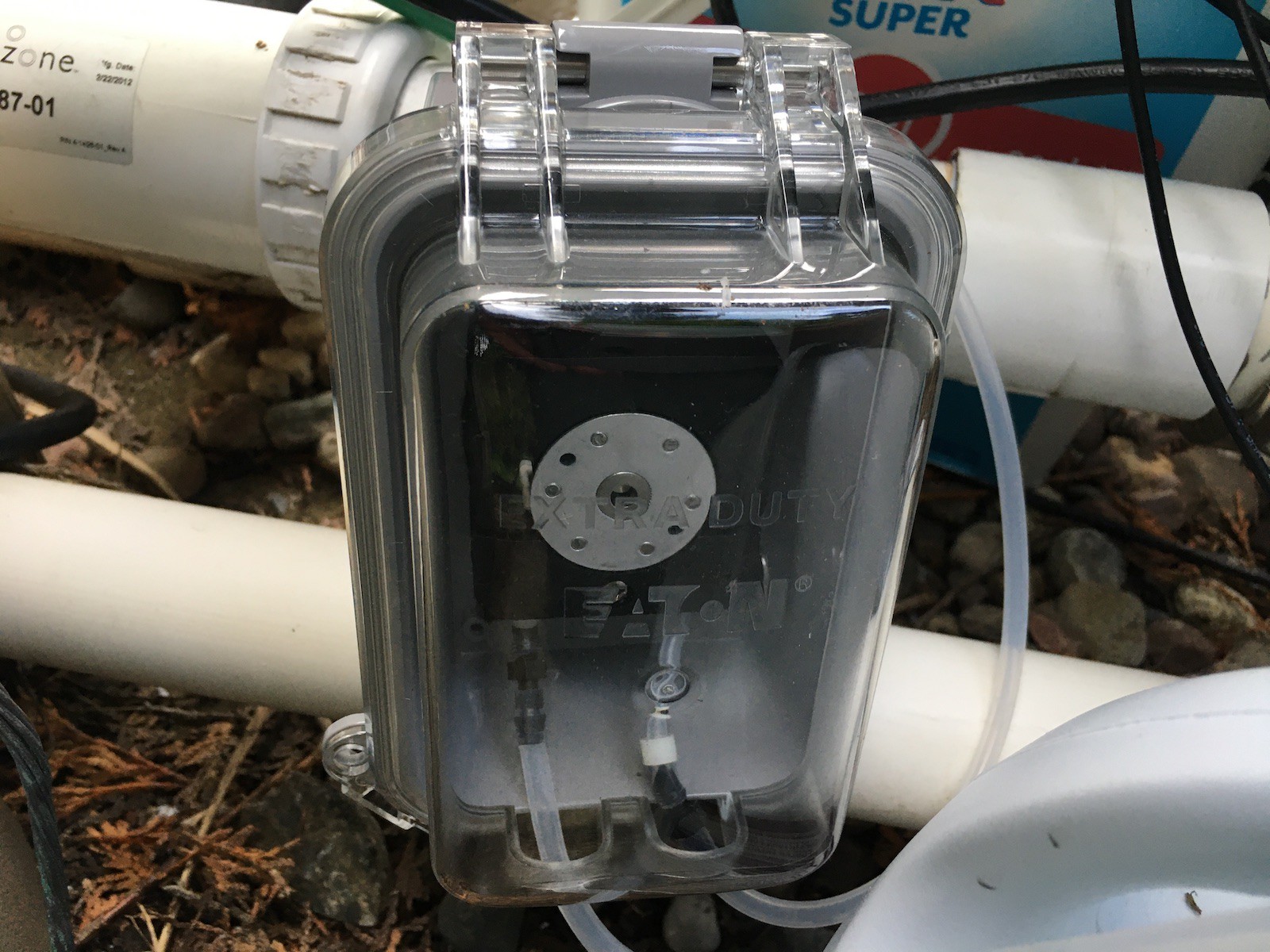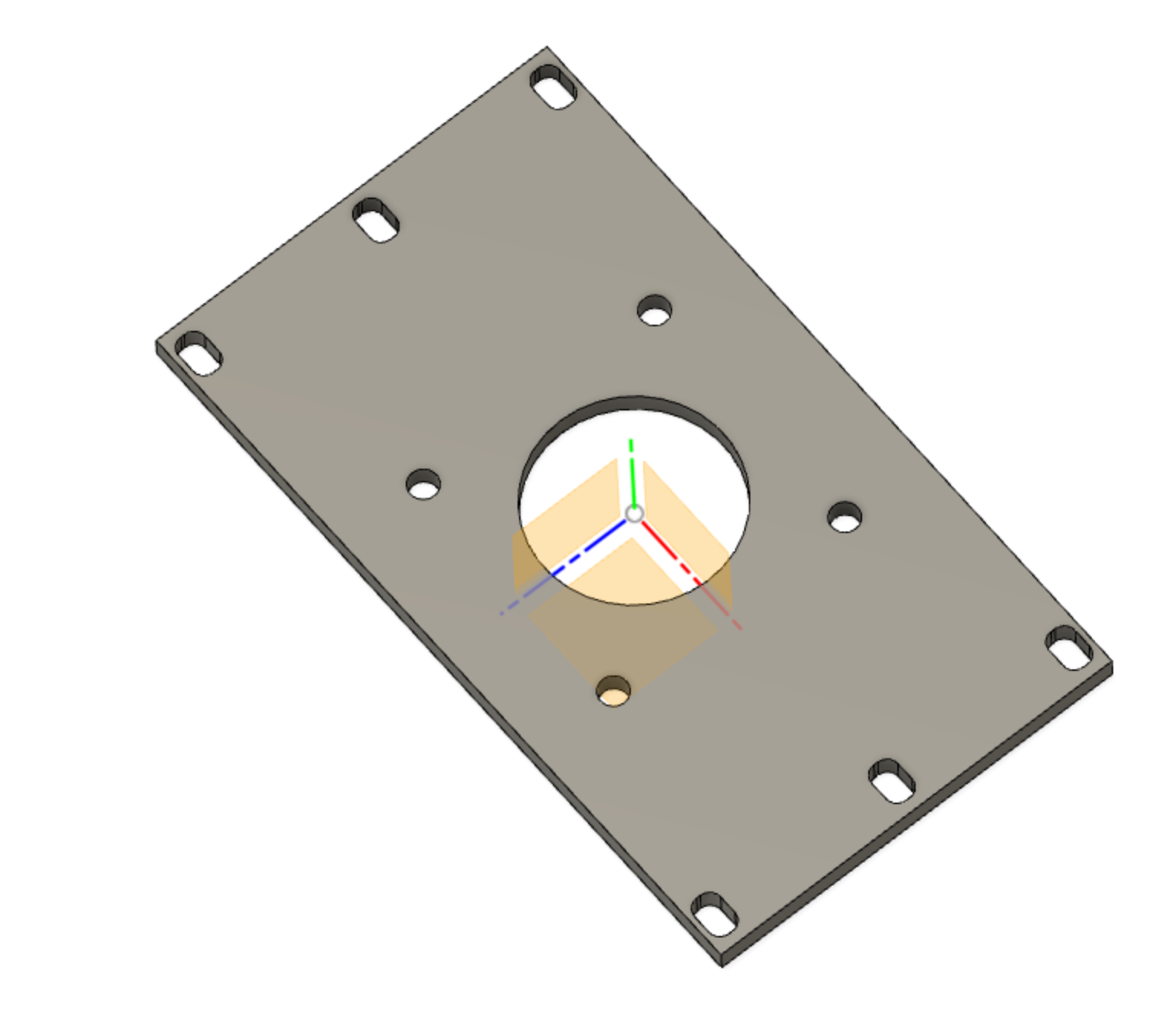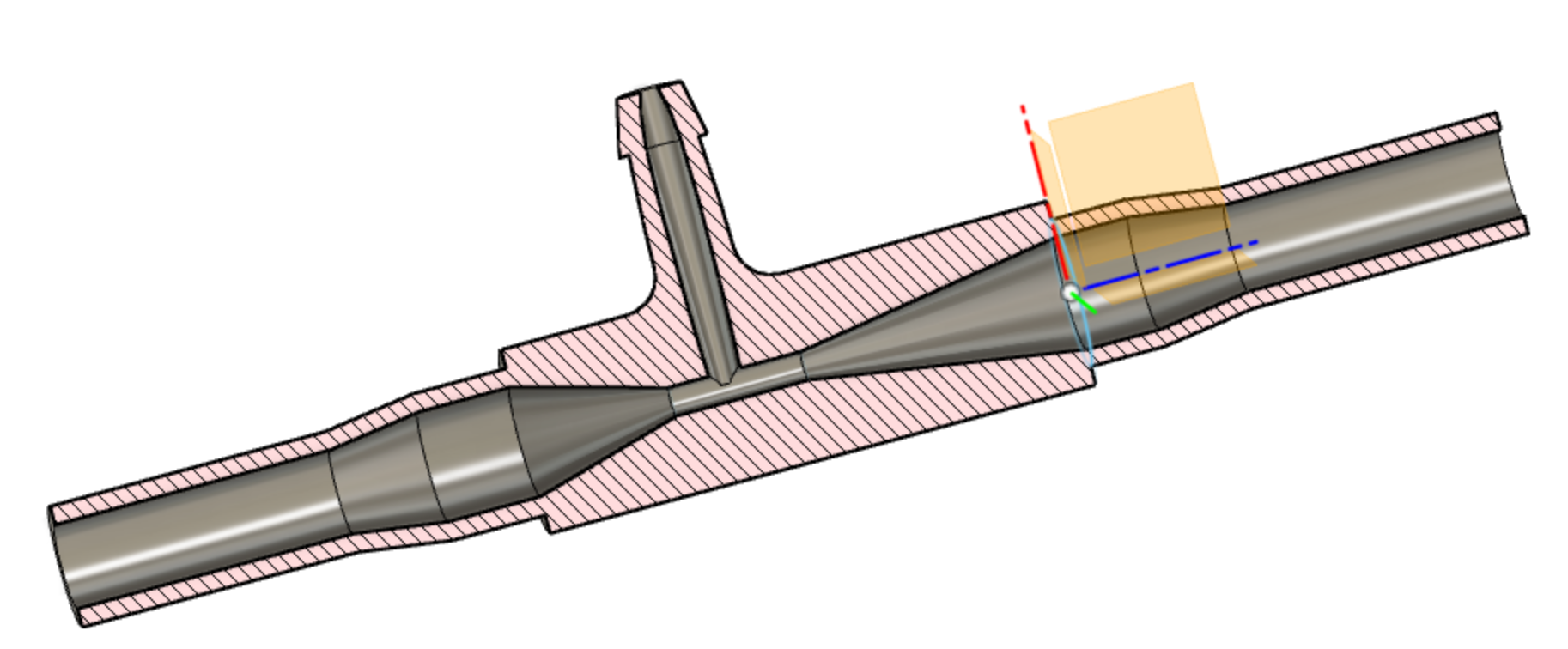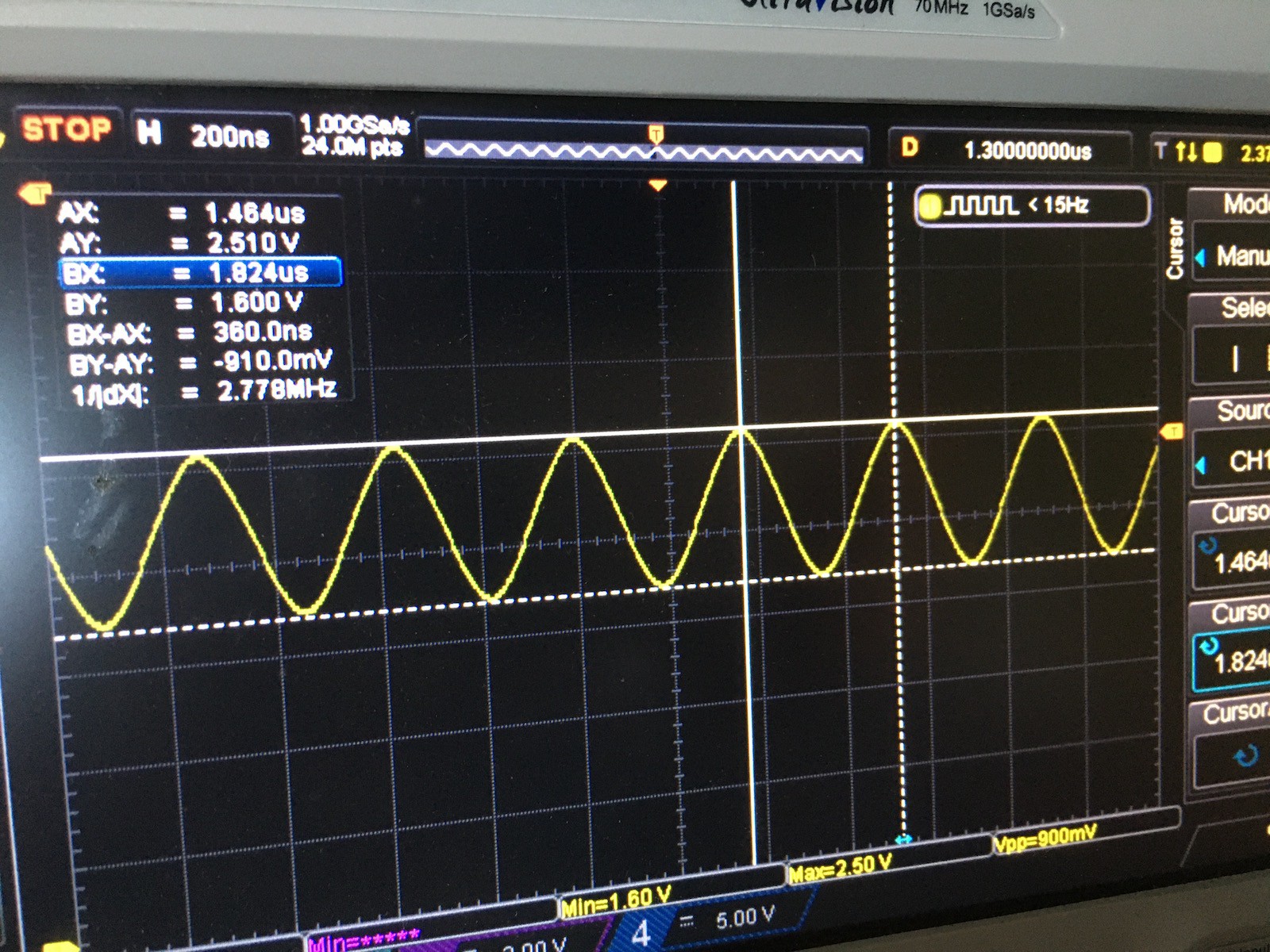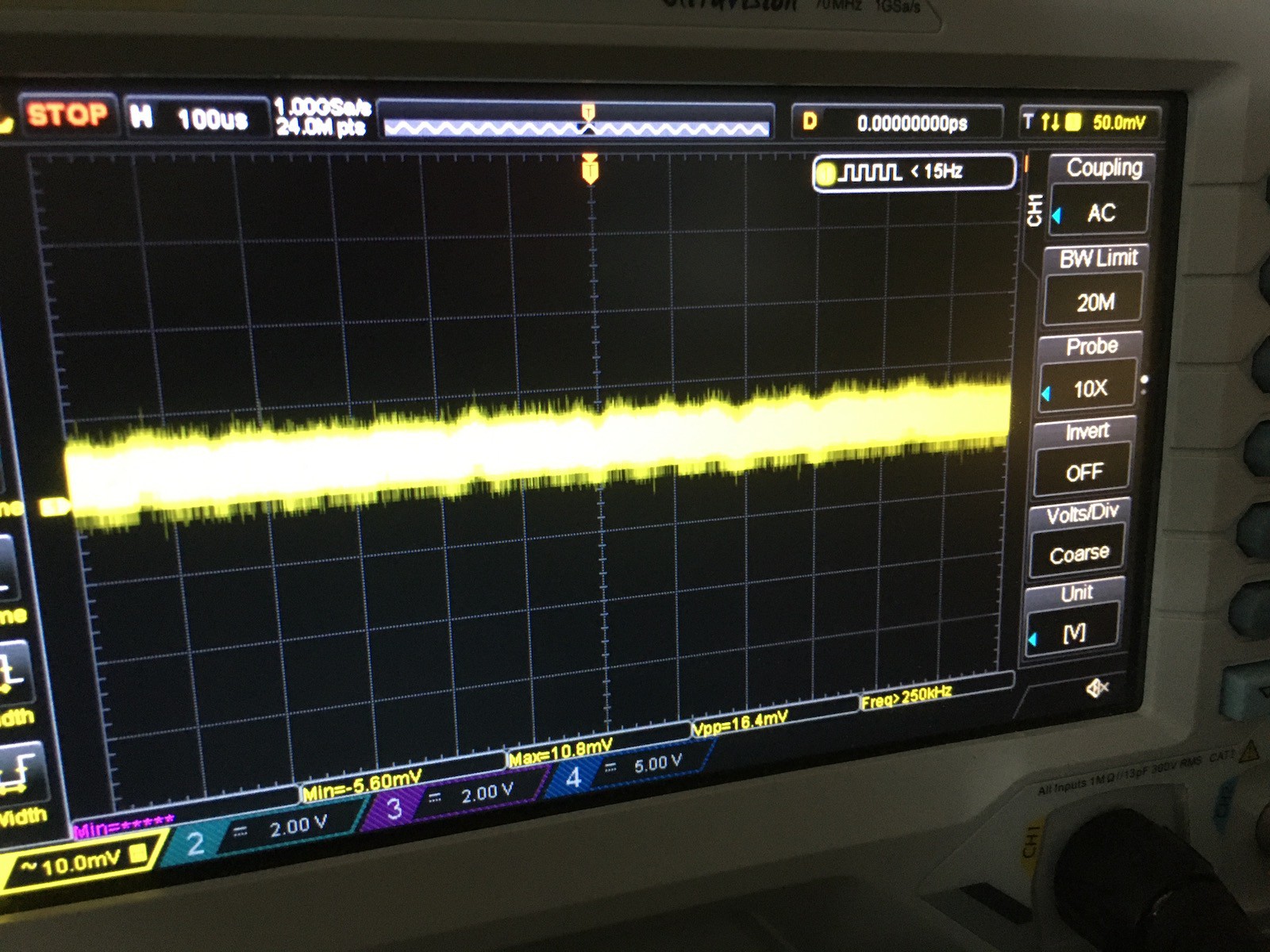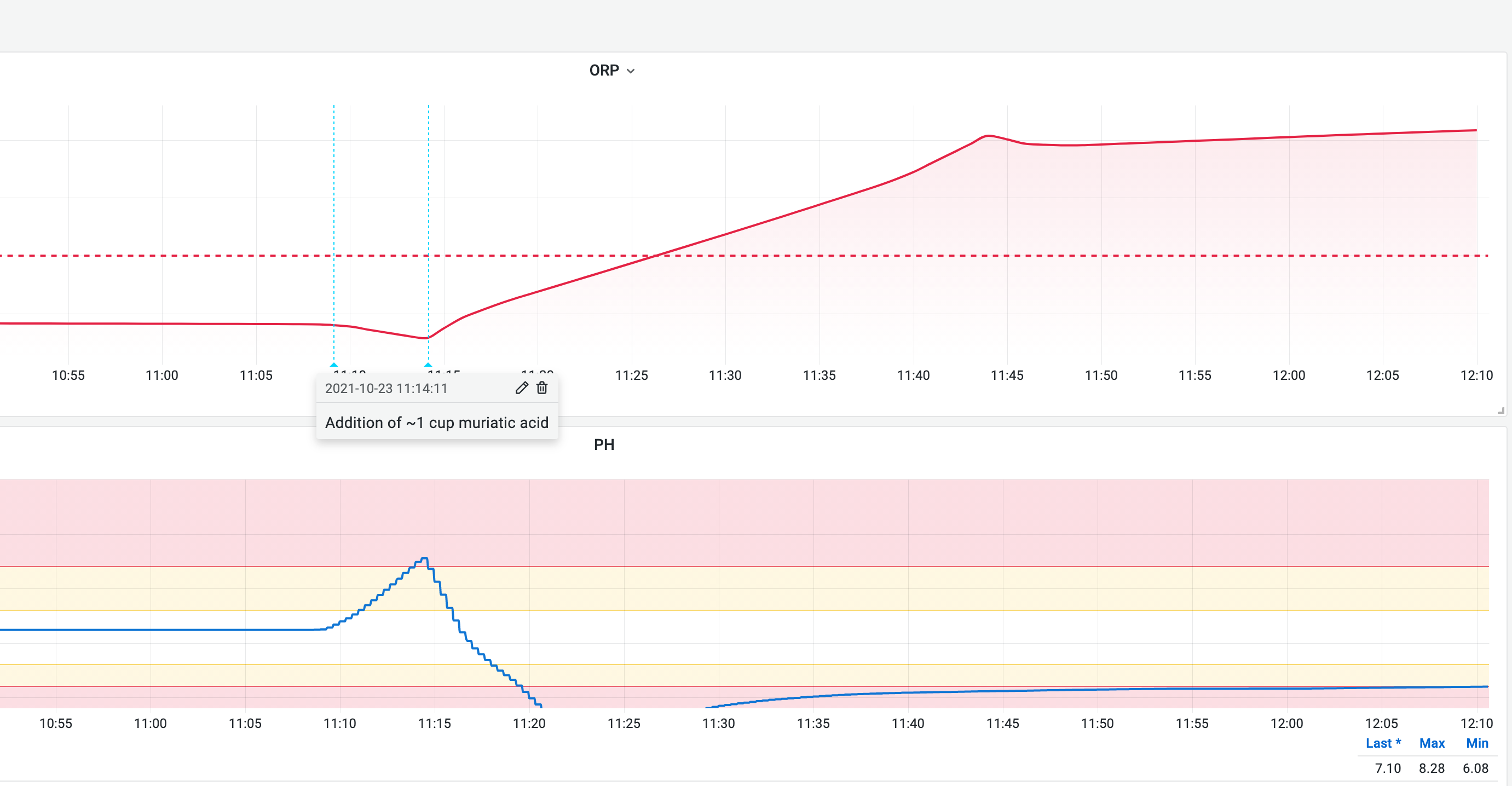-
ORP and PH probes & calibration
10/24/2021 at 14:13 • 0 commentsFirst, huge thanks to Jean-François and Marie-Ève at Hanna Instruments for their support! I observed that resetting the electronics had an effect on ORP readings:
![]()
In the above image, ORP is hovering around 720 mV before resetting the electronics at around 12:05. I was surprised to see the amount of time it took for the readings to recover (many hours as can be seen here). I didn't observe this phenomenon when using a concentrated solution, so I inquired with Hanna if this might be normal. They responded by sending someone over with one of their ORP meters, and the same observation was made with their equipment. My conclusion is that it has something to do with alkalinity or ion concentration of the measured solution (?).
I chose Hanna's HI 2001 ORP and HI 1001 PH probes for the project. The probes are compact and rugged, and have 3/4" NPT that can be used with readily available PVC pool fittings. They have so far worked very well.
I also got 470 mV solution to calibrate the ORP probe, along with PH 7 and PH 10 solutions to calibrate the PH probe. Calibration with the system is pretty easy: just put the probe in the appropriate solution, and press the corresponding button:
![]()
I don't currently do temperature compensation for PH, but that may be something I do in the future. Given that I try to maintain PH in the 7.2 - 7.6 range, the effects of temperature variations are limited anyway.
-
About the dosing pump
10/24/2021 at 12:34 • 0 commentsThe dosing pump is very much a home-made thing (and it also requires a proper mounting enclosure!):
It currently consists of:
- Silicon tubing
- Peristaltic pump
- Outdoor electrical box
- A 3D-printed bracket I made in Fusion 360 (file can be found in main project page)
![Plate Plate]()
Nema 17 motor to electric outlet plate There was already an ozone venturi injector for the pool, so I am tapping into that to inject the bleach. My 3D printed design attempts at a small venturi injector of my own were all unsuccessful, maybe because I tried making them too small.
![Venturi Venturi]()
Cross section of a failed venturi pump. Maybe if they were printed it bigger? No specs are provided on the stepper motor, and I don't really trust the stated 1.3A rating, so the board is designed to run it at around 500 mA. I can get about 100 mL per minute, which isn't very much, but works well enough.
-
Some notes about v0.1
10/24/2021 at 12:02 • 0 commentsA couple of details about the released version:
- I had not included a footprint for a capacitor for the LMP7721 feedback loops, and it's needed to avoid oscillation:
LMP7721 oscillates without capacitor in feedback loop The image below shows the effect of a 2nF capacitor soldered against the feedback resistor. The next revision will have a footprint to accommodate it.
2nF capacitor in LMP7721 feedback loop - The second point is that adding a second motor controller for acid injection will prove useful in the next revision
I built this project because it was a fun thing to do, more than the fact that I felt my pool needed automation. That being said, I learned more about pool chemistry in a couple of days of the project being online than I did in 10 years of pool ownership.
The first thing is probably that pool supply store water analysis isn't what it's cracked up to be (probably not much of a surprise there). I can't speak about every store, but the analysis devices at my store aren't well-calibrated, so the chemical recommendations between two of them for the same sample are completely different.
The second thing is that there isn't much of a point adjusting PH punctually. Like many before me, I've found that maintaining a low enough PH is potentially more important than sanitizer levels:
![]()
In the image above, the first marker shows the effect of adding pool shock. Sanitation levels are going down?! Initially, that was a surprise to me. The reason is that shock (and bleach) are bases, which increase PH. While the effect is temporary and PH would eventually even back down, you can see that the addition of muriatic acid (second marker) has a huge impact on ORP levels. That is due to that fact that at a lower PH, chlorine breaks down into hypochlorous acid, which has a much higher oxidation potential than the other form, hypochlorite ions, that form at a "high" PH.
TLDR: it is equally important to dose acid as it is chlorine. V0.2 will include a second stepper driver.
Long-Range Pool Monitoring and Sanitation
Measure PH, ORP, temperature, inject chlorine in a pool. Log all data wirelessly.
 Discreet Mayor
Discreet Mayor

